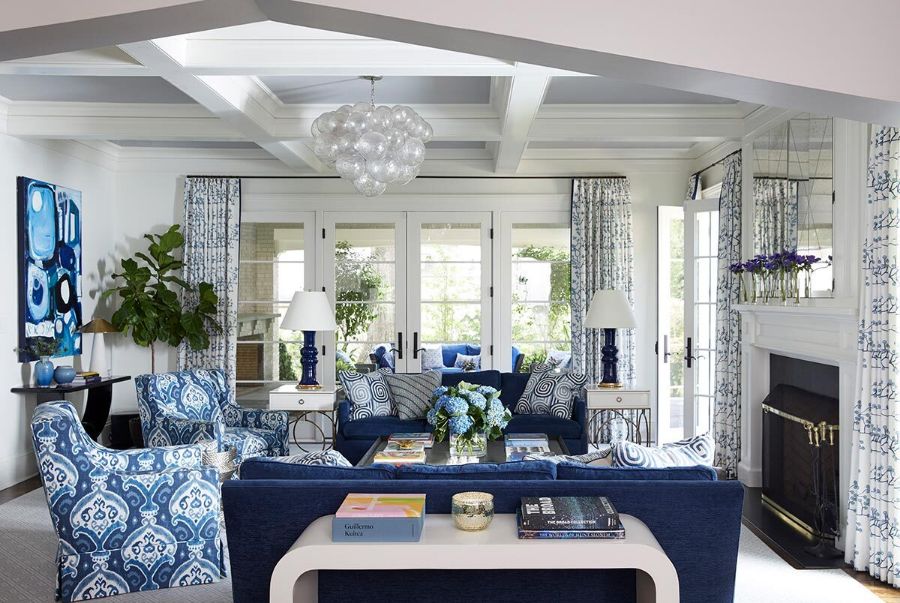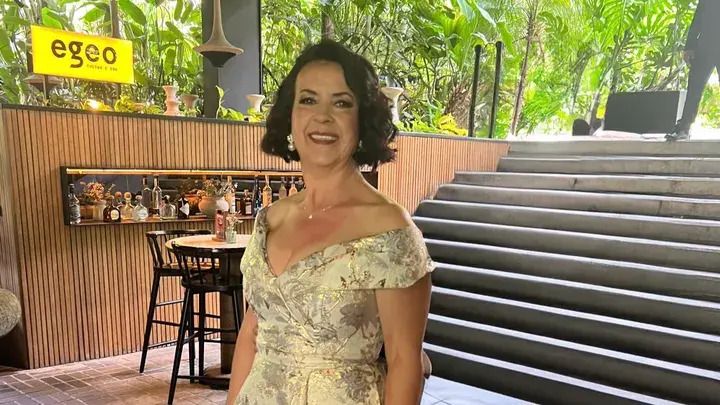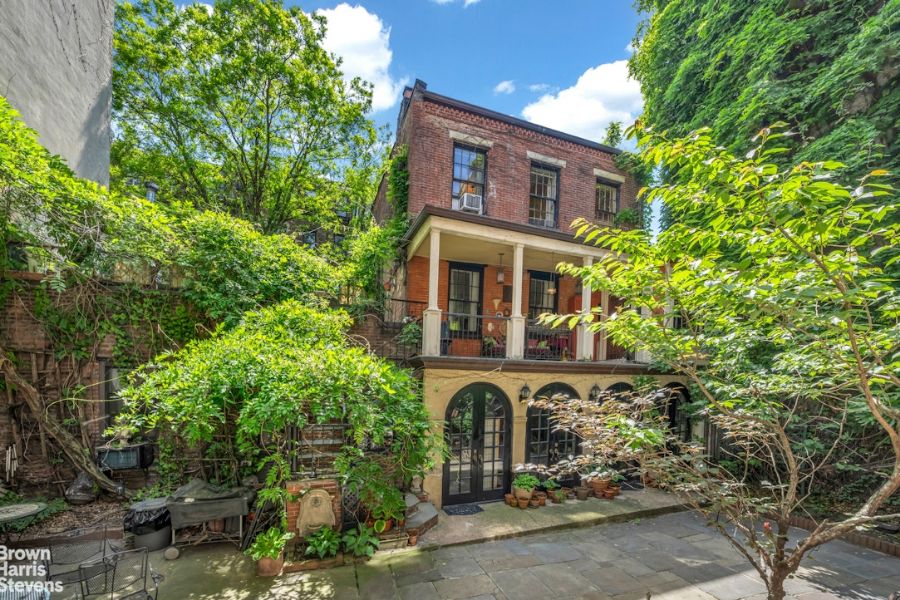To interior designer Cathy Austin, there is nothing more important to one's home than filling the space with the things that you love. Whether it be art, bold and bright colors, or finding pieces that communicate the client's personality, Cathy designs each space with a thoughtful approach.
In a recent sit-down with Brown Harris Stevens Agent Suzanne Werson, Cathy discusses a wide range of topics. In the interview, she shares the selection process for choosing artwork, the most important elements of a bedroom, and the cultural design choices that inspire her own work. Read the full interview below.
What is the most important element to have to create the perfect bedroom?
Besides black out lining for drapery and high thread count bed linens, the most important element is surrounding yourself with what you love. Think of the colors and items that bring you joy that you want to see first thing in the morning and when you fall asleep at night. For this Showhouse bedroom in Atlanta, I thought of myself as the client. A joyful palette of soft greens and lilac inspired by the wisteria of Lake Como sets the tone in a backdrop of chinoiserie wallpaper. I wanted to create a soulful space with interesting juxtapositions such as a traditional canopy bed reimagined in brass and mohair, paisley embroidered drapery mixed with a leopard rug, and a sleek tufted banquette and mirrored chest placed below abstract contemporary art.
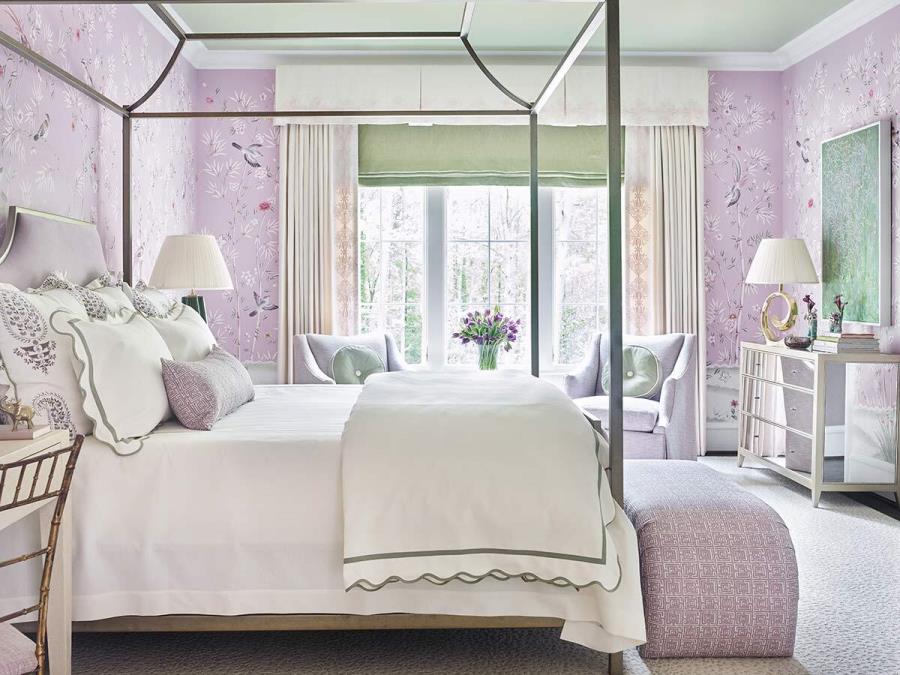
How do you go about the selection of placing artwork? Does the art determine the rest or vice versa?
I always prefer to start with the art when designing a room. That way, every design decision can be made to enhance the work of art and not fight with it. I typically like to pull a color from the artwork to use as the wall color to start. When visiting a museum exhibition, notice that the curators will select a background color for the museum walls that always beautifully complement the paintings.
The fabric selections for upholstery and pillows do not necessarily need to match the artwork, but colors should be considered so they do not clash or fight with the artwork. The room is in harmony when everything flows together and nothing is jarring. Occasionally, we will have to select artwork later in the design process which is always much more difficult.
Working with my clients’ impressive collection of contemporary art set in a historic home was a dream come true for me as a designer. The couple’s favorite color of “Yves Klein Blue” was used as a connecting color in several spaces from lacquered walls in this scullery to fabric selections in the family room and kitchen. Throughout every space, great care was taken to make sure every work of art, fabric, finish, and object enhanced the overall design and did not detract from one another. Seen here are works by Tom Laduke, Bright Riley, and Lee Ufan.

What is your favorite style (and why) from another culture and how often do you incorporate it into your own work?
I fell in love with Moroccan design on a trip to Marrakech years ago. The fearless use of colors, textures and hand crafted items left such an impression on me. The Moroccan people are against anything showy that would cause others to cast a jealous glance at others believing that it can steal part of one’s soul. They use colors, mirrors and decorative items such as pom poms and tassels to distract the “evil eye.”
Conversely, the Moroccans celebrate any hand crafted item believing that this talent comes from God such as hand woven textiles, rugs, metalworks and tiles. I love to use Moroccan rugs and textiles in my designs along with pierced Moroccan light fixtures.
In my own entry hall, I used a colorful Moroccan rug along with art from Marrakech including works by Yves St. Laurent, a Moroccan modernist painter, and smaller works found in the souks.

What is the most important room in the house and how do you make it special?
I think the most important room in the house is the one where the family spends the most time. This varies by project, but it is typically the family room. I start by interviewing all of the family members about their habits; how they like to relax, read, watch TV, and work. I also ask about color preferences, pets, upkeep, and tidiness. It is fascinating how different the habits are. Once I know these, I design a furniture plan that will accommodate the family’s needs.
In this particular family room, the fabrics needed to hold up to the wear and tear that comes along with two young boys and a dog. Seating was designed to enjoy the fireplace and TV (hidden behind antique mirrored panels above the fireplace) both lying down or sitting on the sofas and face on sitting in the club chairs. Every seat has a landing area to place a book or a drink. Layers of lighting allow for many moods. Geometric wool carpet can be steam cleaned after spills and accidents. The family’s favorite color blue was the design thread that went through all of the interiors to create unity between spaces.
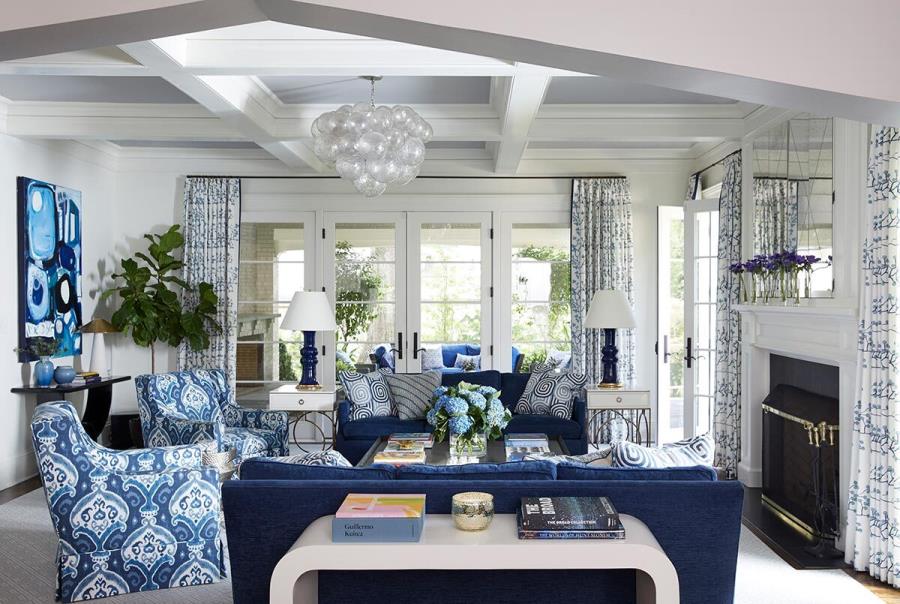
Why do you like being an interior designer and how do you see yourself in the scheme of it all?
Interior design has been a wonderful career for me because it uses both the left and right sides of my brain. Design allows me to be creative and every single project is completely unique to best represent the personality of the client. The space planning and problem solving side of the business is just as important. The creative part cannot shine if the logistics and infrastructure to get the job done are not in place. I see myself as an interpreter of the clients’ tastes creating bespoke and timeless interiors that infuse artistic and personal elements at every turn. I am also a facilitator helping clients come up with solutions for their design needs through my attention to detail, practical business sense and personal approach. Over the past 20 years, I have gathered a trusted community of vendors and artisans. This collected expertise allows me to manage projects of any size from design updates to complete renovations.
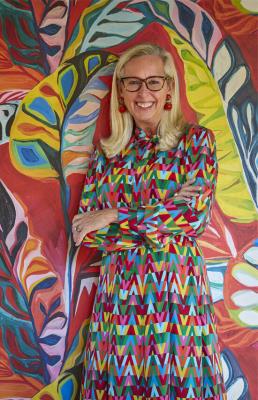
If you could make up the perfect dream project, where would it be and how would you do it?
When I lived in New York City after college, I discovered my love of interiors by going into many residences through working at Sothebys and visiting friends. I was amazed by the variety of architectural spaces from pre-war buildings to lofts and how people could express themselves through their interiors. A home provides a haven from the grind of everyday life where one should be surrounded by favorite works of art, objects, colors and patterns that reflect the individual that inhabits the space.
My dream project would be this “Artist’s Salon,” that I designed for a virtual Showhouse for the Atlanta Decorative Arts Center. It was inspired by my fantasy of living in a penthouse overlooking the Chrysler Building filled with Abstract Expressionist paintings and iconic furnishings. The wall color was derived from Babe Paley’s famous “taxi cab yellow” salon designed by Albert Hadley. The rest of the palette was inspired by the lights of the city skyline, and the colors found in the paintings of Willem de Kooning and Helen Frankenthaler.

